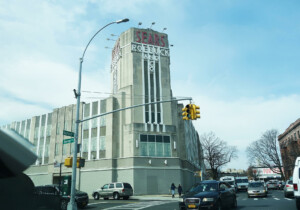At the tail end of Historic Preservation Month is what would have been Richard Stanley Nickel’s 90th birthday, on May 31. The storied historic preservationist’s legacy still looms large amongst architecture and historic preservation intelligentsia like no other practitioner living or dead. In Chicago, Richard Nickel’s hand seems to guide how the built environment is documented, gives a level of honesty to those that practice architectural salvage, and provides a saint-like martyr for traditional preservationists. No one interfacing with the Chicago School of Architecture–specifically the work of Louis Sullivan–is able to detach themselves from what Richard Nickel wrote or what he saw. Nickel has been studied and dissected in many ways before, but a new organization seeks to take a fresh, objective look at the raw body of his work.
Bianca Bova is associate director of the Chicago Architecture Preservation Archive (CAPA), who, along with storied City of Chicago Cultural Historian Tim Samuelson, is at the helm of the organization devoted to “the documentation and stewardship of materials” of early urban preservationists, specifically Nickel. “Richard Nickel is a moving target,” says Bova, “and CAPA is an open resource to help maintain his ongoing relevance.” CAPA is in the process of creating a full inventory of the collection, which is complementary to the contents of the Ryerson and Burnham Libraries architectural archive. While the Richard Nickel Archive includes negatives, photographs, contact sheets, architectural drawings and other effects, including Nickel’s personal library, CAPA’s collection comes from Richard Nickel’s friends, like Tim Samuelson, and architect John Vinci. It contains salvage, personal items, the working files of The Complete Architecture of Adler and Sullivan, and perhaps most importantly Nickel’s datebook, which Bova has poured over and determined that many of the individuals within it are “still around and have a lot to say.”
Richard Nickel has long been presented as a tireless martyr, a preservationist willing to lay down his life. On April 13, 1972, Nickel left home early to salvage architectural fragments inside the Chicago Stock Exchange, an 1894 structure by Dankmar Adler and Louis Sullivan slated for demolition after a lengthy advocacy campaign. Demolition halted after Nickel didn’t return home that evening. Friends and family continued to search for him for a week, only finding his briefcase and hardhat amongst the rubble. Once demolition resumed, a worker spotted what looked like a human shoulder, two floors beneath the Trading Room, in the Stock Exchange’s sub-basement.
Richard Nickel had been crushed to death, but his body had remained intact. Debris and rubble, along with cold water seeping into the building had kept decomposition at bay. An autopsy later revealed that Richard Nickel had suffered from pulmonary emphysema and chronic bronchitis, a result of breathing in 20 years of dust and airborne debris from salvage sites. Through the nature of his death, Richard Nickel’s legacy began to take on a cult-like status, a perspective that Bova feels Nickel would take issue with. “He was a good person, but not a saint.” The collections at CAPA, housed inside Mana Contemporary Chicago, strive to allow Nickel to speak for himself through primary source material. While CAPA may provide a 21st century answer to preservation, Bova is reserved when asked about how Richard Nickel might feel about the contemporary historic preservation movement, “I would never presume to speak for Richard.”











